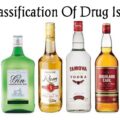Drugs are chemically designed substances that are used to cure, treat, prevent or diagnose any disease in humans or animals. If a chemically created agent promotes physical and mental well-being, then that can also be classified as a drug or a pharmaceutical agent. Basically, they alter the physiology of the host’s body. The first synthetic pharmaceutical, Aspirin, was introduced in 1897. Since then there have been incredible advances in drugs for a wide range of health concerns including disease, mental health, and other conditions. Today there are thousands of drugs on the market able to prevent, treat and lessen the impact of ailments that would have been fatal just a few generations ago.
One important factor to remember, drugs in large doses are considered poison. They can create toxic reactions in the body and cause serious damage, even death. Certain drugs can also be addictive and lead us to form bad habits. And there are certain drugs that are so very harmful, they have been deemed illegal by most societies. Let us now understand the classification of drugs.
What are the 6 classifications of drugs?
A drug of any type can be classified into six broad categories. Let us study these categories in some detail.
Comprehensive systems
The Anatomical Therapeutic Chemical Classification System (ATC) is most widely used. This system classifies the active ingredients of drugs according to the organ or system on which they act and their therapeutic, pharmacological, and chemical properties. It is controlled by the World Health Organization Collaborating Centre for Drug Statistics Methodology (WHOCC), and was first published in 1976. This pharmaceutical coding system divides drugs into different groups according to the organ or system on which they act, their therapeutic intent or nature, and the drug’s chemical characteristics. Different brands share the same code if they have the same active substance and indications. Each bottom-level ATC code stands for a pharmaceutically used substance, or a combination of substances, in a single indication (or use). This means that one drug can have more than one code, for example, acetylsalicylic acid (aspirin) has A01AD05 (WHO).
Classification of Drugs Based on Mechanism of action
This type of categorization is from a pharmacological perspective and categorizes them by their biological target. Drug classes that share a common molecular mechanism of action by modulating the activity of a specific biological target. The definition of a mechanism of action also includes the type of activity at that biological target. For receptors, these activities include agonist, antagonist, inverse agonist, or modulator. Enzyme target mechanisms include activator or inhibitor. Ion channel modulators include opener or blocker. The following are specific examples of drug classes whose definition is based on a specific mechanism of action:
- 5-Alpha-reductase inhibitor
- Angiotensin II receptor antagonist
- ACE inhibitor
- Alpha-adrenergic agonist
- Beta-blocker
- Dopamine agonist
- Dopamine antagonist
- Incretin mimetic
- Nonsteroidal anti-inflammatory drug − cyclooxygenase inhibitor
- Proton-pump inhibitor
- Renin inhibitor
- Selective glucocorticoid receptor modulator
- Selective serotonin reuptake inhibitor
- Statin – HMG-CoA reductase inhibitor
- Cholinergic
- Dopaminergic
- GABAergic
- Serotonergic
Classification of Drugs Based on Chemical class
This type of categorization of drugs is from a chemical perspective and categorizes them by their chemical structure. Examples of drug classes that are based on chemical structures include:
- β-lactam antibiotic
- Benzodiazepine
- Cardiac glycoside
- Fibrate
- Opioid
- Thiazide diuretic
- Steroid
Classification of Drugs Based on Mode of action
This type of categorization of drugs is from a biological perspective and categorizes them by the anatomical or functional change they induce. Drug classes that are defined by common modes of action (i.e. the functional or anatomical change they induce) include:
- Diuretic or Antidiuretic
- Inotrope (positive or negative)
- Chronotrope (positive or negative)
- Bronchodilator
- Decongestant
- Antithrombotics
- Antifungals
- Antimicrobials
Classification of Drugs Based on Therapeutic class
This type of categorization of drugs is from a medical perspective and categorizes them by the pathology they are used to treat. Drug classes that are defined by their therapeutic use (the pathology they are intended to treat) include:
- Analgesics
- Antibiotic
- Anticoagulant
- Antidepressant
- Anticancer
- Antiepileptic
- Antipsychotic
- Antiviral
- Sedative
- Antidiabetic
- Cardiovascular
Amalgamated Classes of Drugs
Some drug classes have been amalgamated from these three principles to meet practical needs. The class of nonsteroidal anti-inflammatory drugs (NSAIDs) is one such example. Strictly speaking, and also historically, the wider class of anti-inflammatory drugs also comprises steroidal anti-inflammatory drugs. These drugs were in fact the predominant anti-inflammatories during the decade leading up to the introduction of the term “nonsteroidal anti-inflammatory drugs”. Because of the disastrous reputation that the corticosteroids had got in the 1950s, the new term, which offered to signal that an anti-inflammatory drug was not a steroid, rapidly gained currency. The drug class of “nonsteroidal anti-inflammatory drugs” (NSAIDs) is thus composed of one element (“anti-inflammatory”) that designates the mechanism of action, and one element (“nonsteroidal”) that separates it from other drugs with that same mechanism of action. Similarly, one might argue that the class of disease-modifying anti-rheumatic drugs (DMARD) is composed of one element (“disease-modifying”) that albeit vaguely designates a mechanism of action and one element (“anti-rheumatic drug”) that indicates its therapeutic use.
Other systems of classification
Other systems of drug classification exist, for example, the Biopharmaceutics Classification System which determines a drugs’ attributes by solubility and intestinal permeability.
Legal classification
For the UK legal classification, see Drugs controlled by the UK Misuse of Drugs Act
For the US legal classification, see Controlled Substances Act & Schedules of controlled substances
Pregnancy category is defined using a variety of systems by different jurisdictions.






